Madagascar Weather: from Hot & Dry to Lush & Rainy
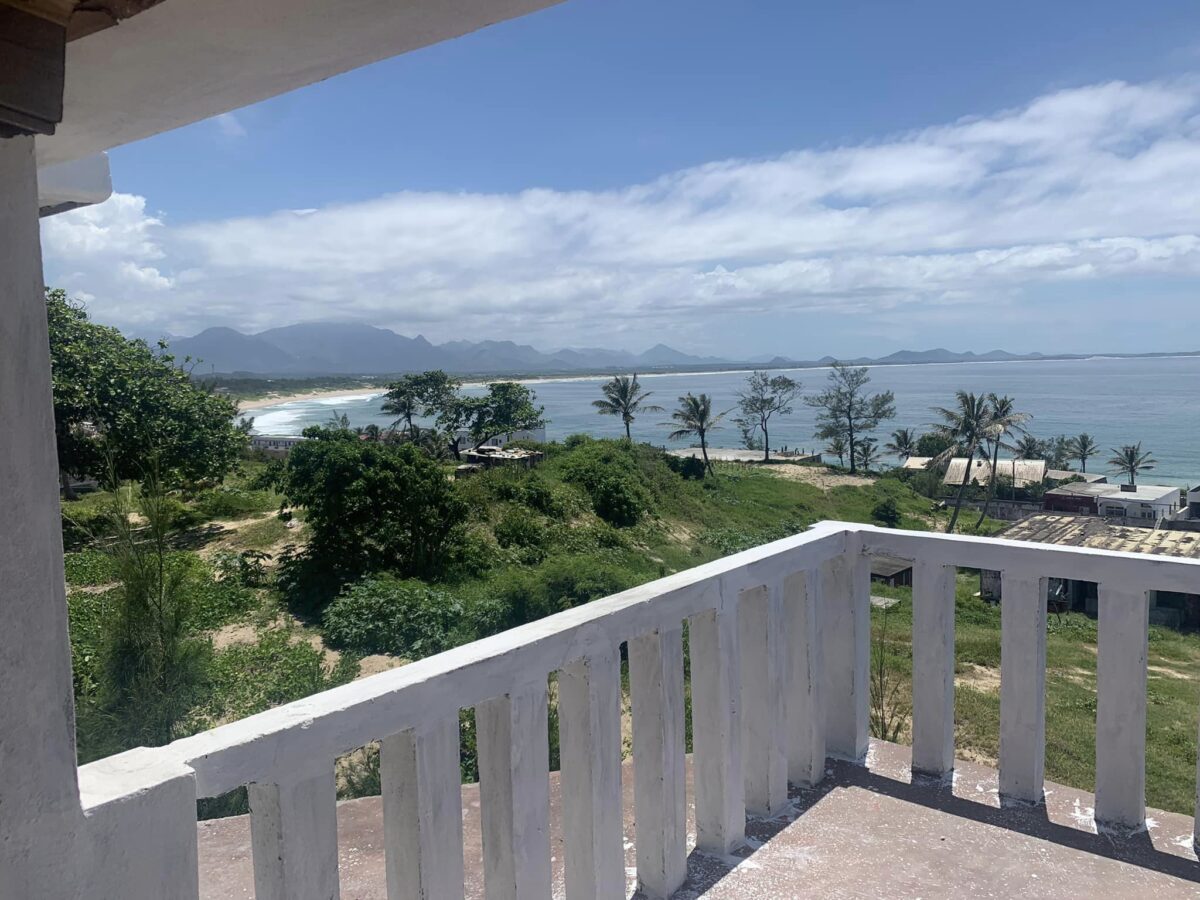
One thing to know about Madagascar weather is that it is rarely the same from day-to-day. If you were in Taolaganaro, Madagascar, last year (2022) for May and June, you would have experienced cold and rainy weather. This year (2023), however, we’ve had heat and drought. In fact, we’ve had pretty much perfect weather for a desert girl from Colorado like myself, cool nights, perfect for sleeping with a duvet, and warm sunny days.
Yesterday was particularly hot and dry. The social enterprise Tatirano where we buy purified rating water for the Cafe Bar Colorado and our drinking water, almost ran out. And then BOOM, out of the blue, around midnight, the monsoon started, and it hasn’t stopped.
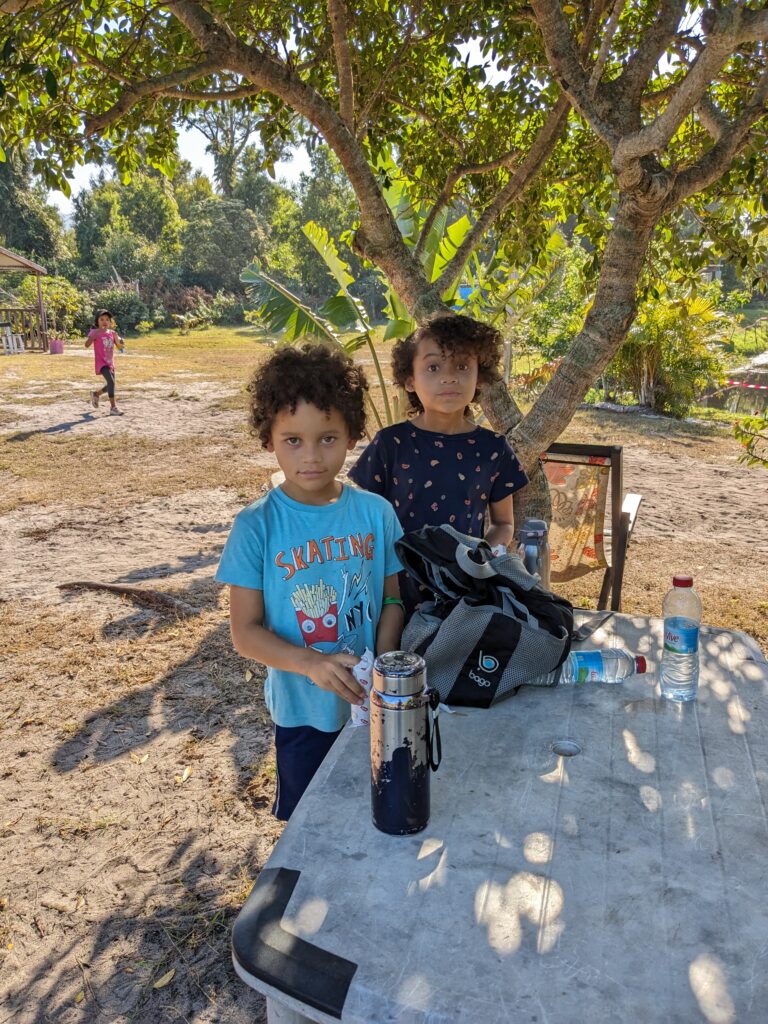
Madagascar has a diverse range of landscapes, from lush rainforests to hot deserts, and Madagascar weather conditions can vary greatly depending on the region. When traveling in Madagascar, whether you are staying in a hotel, rental, or camping, you will be happier if prepared for the diverse weather conditions you may encounter.
In the rainforests, the weather is typically hot and humid during the day, with temperatures ranging from 20-30°C (68-86°F); occasionally, it gets hotter and sometimes much colder, in July in the highlands, we can get hail, and even near freezing temperatures!
In general, the nights can be cooler, with temperatures dropping to around 10-15°C (50-59°F); however, in the southern summer, you may encounter nights sticky humid nights without wind. Here in Fort Dauphin/Taolagnaro, that is rare, but in inland, be prepared. Packing lightweight, breathable clothing for the daytime and warm layers for the evenings is important, although you also probably want some light cotton sleepwear for warmer nights!
In the desert regions of Madagascar, the weather can be extremely hot during the day, with temperatures reaching as high as 40°C (104°F). However, temperatures can drop significantly at night, with lows around 5-10°C (41-50°F). Packing sun protection, such as hats and sunscreen, and warm layers for the chilly desert nights is important.
No matter where you are visiting, sleeping in a hotel, private lodging or camping in Madagascar, being prepared for rain is important. Madagascar has a tropical climate, and rain showers can occur at any time of year. Packing waterproof gear, such as raincoats and (if camping) tarps, is important to stay dry during wet weather.
You can ensure a comfortable and enjoyable camping trip by being prepared for the weather conditions you may encounter when camping in Madagascar.
How to Pack
When packing for a trip to Madagascar, it’s important to approach it as if you were going on a camping trip. With diverse landscapes and varying weather conditions, you’ll want to make sure you have the appropriate gear to ensure a comfortable and enjoyable experience.
As with any camping trip, it’s important to consider the climate and pack clothing that is both breathable and appropriate for the temperature. Lightweight, breathable clothing is essential in the hot and humid rainforest regions, while warm layers are necessary for cooler evenings. In the desert regions, sun protection and warm layers are necessary for chilly desert nights.
Additionally, you’ll want to consider other camping essentials such as a good quality tent or hammock, sleeping bag, and camping stove. It’s also important to bring along any necessary camping gear, such as a headlamp, portable water filter, and first-aid kit.
By approaching *any trip* to Madagascar as if it were a camping trip, you’ll be prepared for any Madagascar weather or environmental conditions that come your way, allowing you to fully enjoy the natural beauty and cultural experiences this unique destination has to offer.
Fort Dauphin: four (yes 4) climates in one!
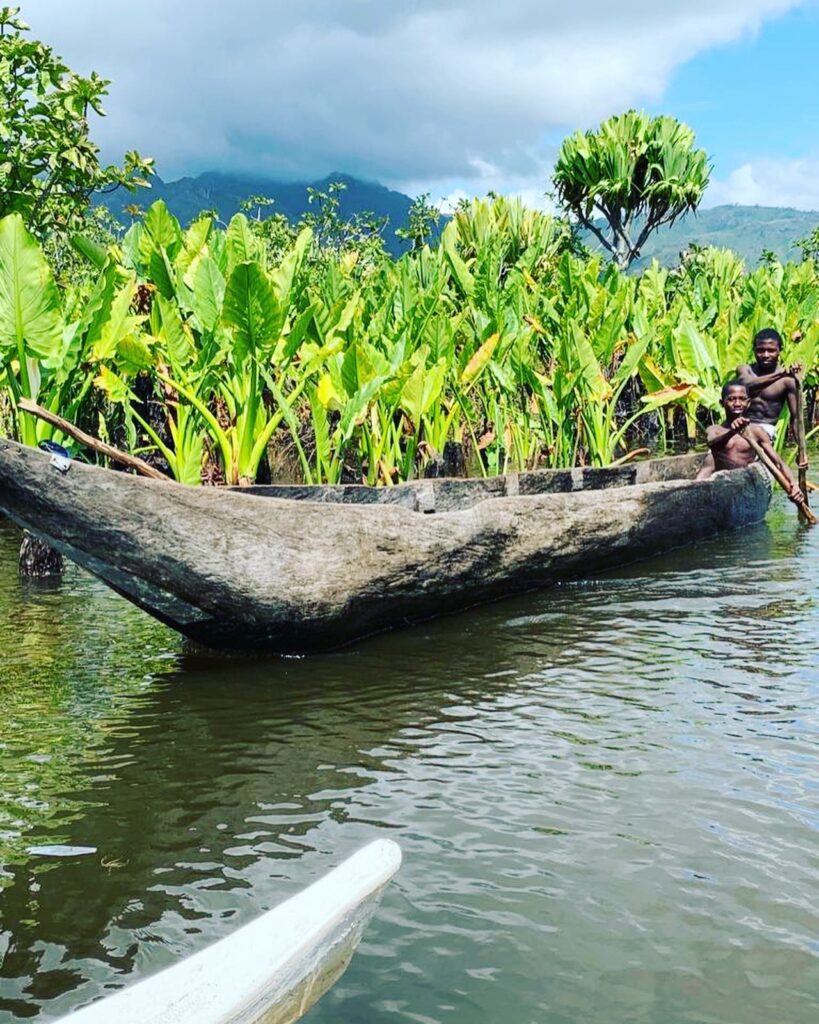
The Taolagnaro District, Fort Dauphin region of Madagascar, is a unique destination that borders on four distinct climates: desert, beach, mountain, and rainforest. This means that when planning a trip to this region, it’s important to be prepared for various weather conditions.
In desert areas, temperatures can soar during the day and drop significantly at night, so it’s important to pack sun protection and warm layers. A sun hat is a must, as is a water bottle. The beach areas can be hot and humid, so lightweight, breathable clothing is a must. The mountainous regions can be cooler, so warm layers are necessary for comfort. And in rainforest areas, it’s important to pack waterproof gear to stay dry during rain showers.
By being prepared for all of these climates, you’ll be able to fully enjoy all that the Fort Dauphin region has to offer. Whether hiking through mountainous terrain, lounging on the beach, or exploring the lush rainforests, you’ll be ready for anything. So, pack smart and get ready for an unforgettable adventure in this unique and diverse corner of Madagascar.
Best Season to Visit based on Madagascar Weather?
Many sites will tell you that Madagascar experiences two distinct seasons: a rainy season from November to April and a dry season from May to October; however, that is not always true. It is important to note that during the rainy season, you can still experience hot and dry weather, especially in the country’s northern, western, and coastal regions, including Fort Dauphin. Conversely, during the dry season, you may experience unexpected rain showers or several days of constant rain.
It’s important to be prepared for the potential for heavy rain during the rainy season and the occasional rain showers during the dry season. This means packing appropriate rain gear such as waterproof jackets, rain pants, and waterproof hiking boots. Packing lightweight, breathable clothing to stay cool in hot and humid weather and warm layers for cooler evenings is also important.
In Fort Dauphin, the ocean water is generally warm from November through March or April, but you will also get higher humidity at this time. And even though it is shorts and flip-flop weather most of the year, ensure you have a warm sweater, and long pants, in your bag!
By being prepared for the varying weather conditions during both the rainy and dry seasons, you can fully enjoy all that Madagascar has to offer. Whether you’re exploring the lush rainforests or lounging on a tropical beach, you’ll be ready for whatever weather comes your way.
Mosquitos
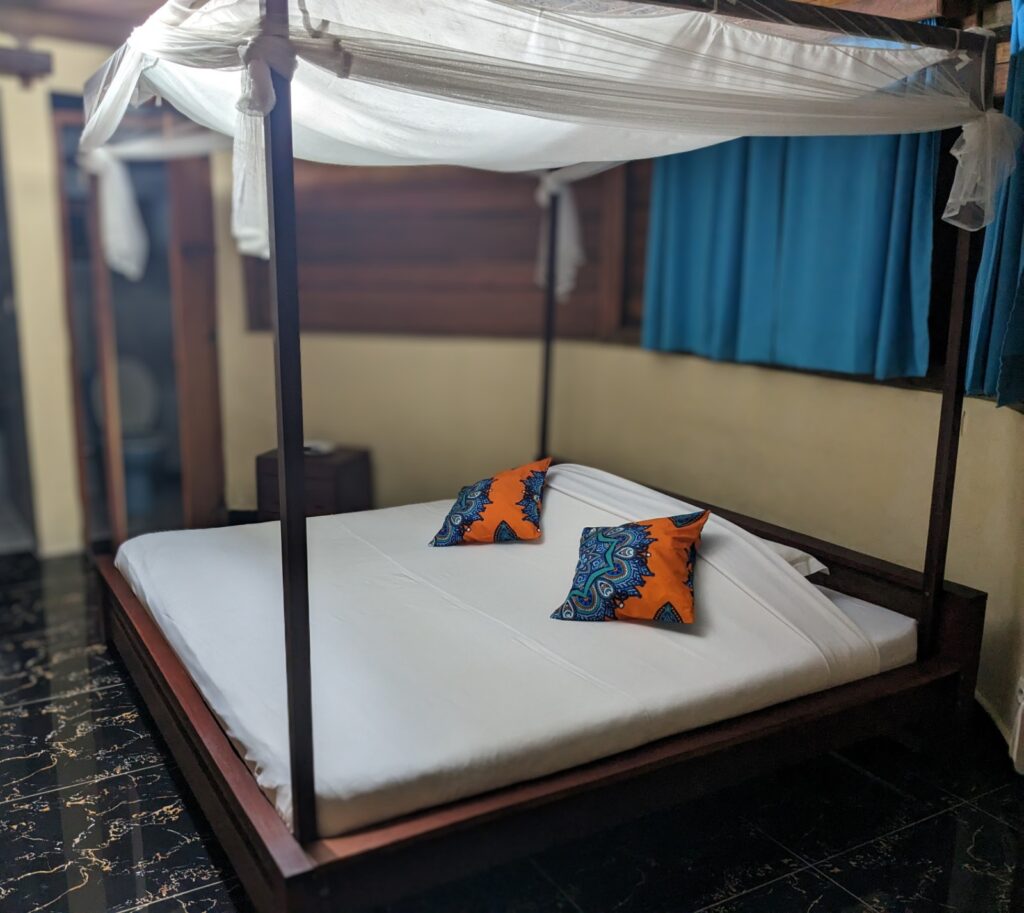
The mosquito factor is another reason to ensure you have both warm and light weight pants and long-sleeved shirts. These little boogers love to eat your ankles and the backs of your arms and legs at dusk and dawn. Indeed, more recent research indicates that the risk of getting bit by mosquitos that transmit malaria is in the early evening (not at night while you are sleeping).
Day Time Protection
During the daytime, when malaria transmission is low, you will primarily want protection for hikes or outings in nature or if you will be sitting in a room or restaurant near the water. A natural repellent like Badger (Deet Free) offers is probably sufficient.
Early Evening Protection
During the early evening, say 30 minutes or so before the sun sets, and then for the next few hours, likely when you are sitting outside enjoying dinner, you should have stronger protection. This means long pants and sleeves and or effective mosquito protection. You will notice that many restaurants put out mosquito coils at this time of day, if you don’t see any, feel free to ask. Our lived experience is that candles and citronella are *not* effective despite what some folks claim at this time of day!
I’ve found that OFF Mosquito repellent sticks, wipes, or sprays such as this one with “Picardin” are the most effective. Use them on your ankles or exposed body parts. I prefer the sticks because you don’t get it on your hands or in the air. Avoid aerosols if you will be flying…
Sleeping Protection
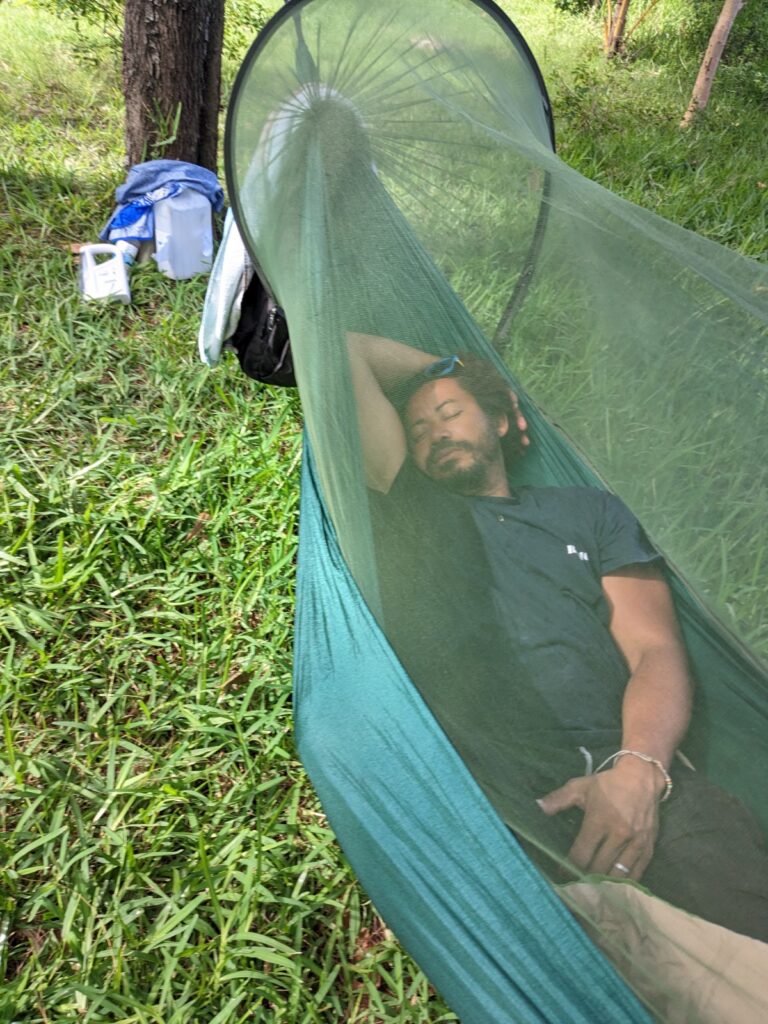
At night, you may not need a mosquito net or protection. If you are staying in an apartment or hotel without a net and it is the higher end (more expensive), you may find that lighting a mosquito coil somewhere in the room is sufficient. For example, in our lodgings at Voky Be, we offer mosquito nets in our ground-floor units but not our upper-floor units, as they rarely get mosquitos.
When camping, be diligent about keeping your tent shut or use a hammock with a built-in net. My absolute favorite camping item is my camping hammock with a built-in mosquito net that folds up small and fits in a day bag! Not only does it let me watch the stars (you do want a fly in case of rain), it also keeps all the bugs away!
You will also find mosquito nets such as the one below sold in most towns; however, if you will be taking a road trip or staying in Airbnbs and you don’t see mosquito nets in the pictures, you may want to bring your own, as while you may not catch malaria while sleeping, even one annoying mosquito can ruin your night’s sleep!
Sunny Days
In addition to packing for diverse weather conditions and mosquito protection, it’s crucial to prioritize sun protection during your trip to Madagascar. The country’s stunning landscapes and outdoor activities often expose travelers to prolonged sun exposure, making sun gear, hats, and sunglasses essential items to include in your packing list.
The intense tropical sun can be harsh, especially in the desert and beach areas of Madagascar. To shield yourself from harmful UV rays, pack wide-brimmed hats that provide shade for your face, neck, and ears. A sun hat not only protects you from sunburn but also helps keep you cool in hot weather. Sunglasses with UV protection are equally important to safeguard your eyes from the bright sunlight.
Alongside hats and sunglasses, consider packing lightweight, breathable clothing that covers your skin to minimize sun exposure. Opt for long-sleeved shirts and pants made from light fabrics that provide both sun protection and comfort. Alison’s preferred sun protection after 5 years in Madagascar is a hat and UV sun clothing, such as this swim shirt, which I have in both short and long-sleeved versions.
When possible, it is highly recommended to avoid using conventional sunscreen or opt for reef-safe sunscreen while visiting Madagascar. Traditional sunscreens often contain chemicals that can harm coral reefs and marine ecosystems when they wash off in the water. All waterways in the south drain into reef systems, so to minimize your impact on the environment, consider using reef-safe sunscreen brands that use mineral-based ingredients like zinc oxide or titanium dioxide or, better yet, sun clothes. These alternatives provide effective sun protection while less harmful to coral reefs and marine life. By making this conscious choice, you can help preserve the pristine beauty of Madagascar’s coastal areas and contribute to conserving its delicate ecosystems.
By prioritizing sun protection and including a sun gear, hats, and sunglasses in your packing, you’ll take crucial steps to safeguard your skin and eyes from the sun’s harmful rays and still be able to enjoy the beauty of Madagascar in comfort (no lobster skin)!
Conclusion
Remember, being prepared for weather fluctuations and mosquito protection is essential no matter the season or region you visit. Don’t forget to pack a variety of clothing options suitable for different climates, including lightweight and breathable clothes for the heat, warm layers for cooler evenings, and waterproof gear for rain showers. Additionally, take precautions against sun and mosquito bites by wearing long-sleeved shirts and pants during the heat of the day and or early evenings, using effective repellents, and considering mosquito nets for sleeping arrangements. With these preparations in place, you can embark on your journey with peace of mind and immerse yourself fully in the enchanting landscapes, unique wildlife, and rich culture of Madagascar.
Read our blog post on What to Pack for the best bet given Madagascar Weather!